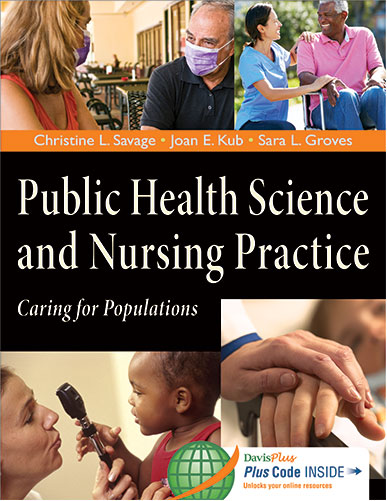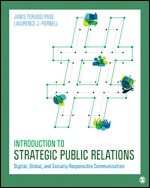Public Health Science Nursing Practice Savage Kub Grove Test Bank
$35.00
Public Health Science Nursing Practice Savage Kub Grove Test Bank
All resources are in electronic format and can be downloaded from your account or email – How to Download. Payments will be processed instantly after checkout. Please note that all sales are final and non refundable. If you still have questions, find answers on our FAQ page or just send us an email at support@testbankware.com, we will respond as soon as possible.
Chapter 3: Epidemiology and Nursing Practice
MULTIPLE CHOICE
- John Snow, considered the founder of epidemiology, realized the source of the London’s cholera epidemic through:
| A. | A residential pattern of death |
| B. | Mapping of the food supply |
| C. | Interviewing the families of the sick |
| D. | Performing autopsies |
ANS: A
Objective: 7. Explain behavioral, environmental, and genetic factors that have an impact on health.
- 59
Heading: Introduction > Historical Beginnings
Integrated Processes: N/A
Client Need: Safe and Effective Care Environment: Safety and Infection Control
Cognitive Level: Comprehension [Understanding]
Concept: Safety; Infection
Difficulty: Easy
| Feedback | |
| A | Snow developed a frequency distribution of the number of human deaths by placing hash marks on a city street map and realized a cluster of deaths occurred near the Broad Street water pump. |
| B | Snow developed a frequency distribution of the number of human deaths and found that they were clustered around the Broad Street water pump, not the food supply. |
| C | Snow developed a frequency distribution of the number of human deaths; he did not interview the families of the sick. |
| D | Snow developed a frequency distribution of the number of human deaths; he did not perform autopsies. |
PTS: 1 CON: Safety | Infection
- The history and development of epidemiology has gone through several developmental phases. The public health nursing student learns that these phases came about in history in what order?
| A. | Risk factor phase, infectious disease phase, and sanitary phase |
| B. | Infectious disease phase, risk factor phase, and sanitary phase |
| C. | Sanitary phase, infectious disease phase, and risk factor phase |
| D. | Agent phase, host phase, and environment phase |
ANS: C
Objective: 7. Explain behavioral, environmental, and genetic factors that have an impact on health.
- 59
Heading: Introduction > Historical Beginnings
Integrated Processes: Teaching/Learning
Client Need: Safe and Effective Care Environment: Safety and Infection Control
Cognitive Level: Comprehension [Understanding]
Concept: Infection; Safety
Difficulty: Easy
| Feedback | |
| A | The first phase, the sanitary phase, was due to the theory that sanitation needed to be improved to aid health. During the next phase, the infectious disease phase, germ theory was developed and antibiotics came into production. The third phase, the risk factor phase, turned to reducing risk for disease and prevention. |
| B | The first phase, the sanitary phase, was due to the theory that sanitation needed to be improved to aid health. During the next phase, the infectious disease phase, germ theory was developed and antibiotics came into production. The third phase, the risk factor phase, turned to reducing risk for disease and prevention. |
| C | The first phase, the sanitary phase, was due to the theory that sanitation needed to be improved to aid health. During the next phase, the infectious disease phase, germ theory was developed and antibiotics came into production. The third phase, the risk factor phase, turned to reducing risk for disease and prevention. |
| D | The agent, host, and environment model is the Epidemiology Triangle, which is the model used to explaining the occurrence of disease. |
PTS: 1 CON: Infection | Safety
- A public health nurse (PHN) is asked by the hospital administration to find out why there are so many pediatric asthma patients coming to the ER for treatment and to develop a plan to reduce admissions by 10%. The nurse needs to untangle the multiple risk factors involved in order to determine what type of intervention should be developed, so he or she uses:
| A. | Descriptive data analysis |
| B. | The ecological model |
| C. | Demography |
| D. | The web of causation |
ANS: D
Objective: 7. Explain behavioral, environmental, and genetic factors that have an impact on health.
- 63
Heading: Introduction > Web of Causation
Integrated Processes: Nursing Process
Client Need: Health Promotion and Maintenance
Cognitive Level: Comprehension [Understanding]
Concept: Oxygenation; Critical Thinking; Promoting Health
Difficulty: Easy
| Feedback | |
| A | Descriptive data analysis is the first step in the analysis of demographic data. It analyses the accuracy of the data, but does not look at risk factors. |
| B | The ecological model is used to design health promotions to maintain and improve health and evaluate behaviors. It is not used to visualize risk factors. |
| C | Demography is the population-level study of person-related variables or factors. It is used to understand population-level patterns related to health phenomena. This may be helpful, but it does not consider the other levels of risk factors. |
| D | The web of causation is a framework that demonstrates the complexity of the multiple factors of illness, injury, and disease, which are determined by multiple causes. |
PTS: 1 CON: Oxygenation | Critical Thinking | Promoting Health
- If a nurse takes the number of new cases of a disease or illness among the contacts of initial (primary) cases and divides it by the number of people in the population at risk, he or she is calculating the:
| A. | Prevalence |
| B. | Incidence |
| C. | Secondary attack rate |
| D. | Attack rate |
ANS: C
Objective: 5. Apply basic biostatistical methods to analyze epidemiological data.
- 65-70
Heading: Tools of Epidemiology: Demography and Biostatistics > Biostatistics
Integrated Processes: Nursing Process
Client Need: Safe and Effective Care Environment: Safety and Infection Control
Cognitive Level: Application [Applying]
Concept: Assessment; Infection
Difficulty: Moderate
| Feedback | |
| A | The prevalence is the total number of accumulated cases of a disease or illness, both new and preexisting, at a given time. |
| B | Incidence is the number of new cases of a disease of illness at a specific time or over a specific period of time. |
| C | Secondary attack rate is calculated this way. It is essentially the number of contacts of the initially ill who are now ill. |
| D | Attack rate is calculated by placing the total number of ill or diseased people in the numerator and dividing by the total number of ill plus well people in the susceptible population. |
PTS: 1 CON: Assessment | Infection
- A public health official reports that the weekly influenza rate for a city in Oregon is 12.5%. This rate does not take into account smoking status, so it is a(n):
| A. | Independent rate |
| B. | Mortality rate |
| C. | Dependent rate |
| D. | Morbidity rate |
ANS: A
Objective: 5. Apply basic biostatistical methods to analyze epidemiological data.
- 65-70
Heading: Tools of Epidemiology: Demography and Biostatistics > Biostatistics
Integrated Processes: Nursing Process
Client Need: Safe and Effective Care Environment: Safety and Infection Control
Cognitive Level: Application [Applying]
Concept: Assessment; Infection
Difficulty: Moderate
| Feedback | |
| A | An independent rate is a statistical rate that is considered apart from other statistics. |
| B | Mortality refers to the number of deaths within a given population. |
| C | A dependent rate is a statistical rate that is considered with other statistics. |
| D | Morbidity refers to the number or proportion of individuals experiencing a similar disability, illness, or disease. |
PTS: 1 CON: Assessment | Infection
- When comparing the body mass index (BMI) of obese women in two cities, it would be an erroneous assumption for the nurse to think that, based on these averages, since the average BMI of City A was higher than that of City B, a woman in City A will have a higher BMI than a woman in City B. This assumption is referred to as:
| A. | An odds ratio |
| B. | An ecological fallacy |
| C. | A causality |
| D. | Relative risk |
ANS: B
Objective: 5. Apply basic biostatistical methods to analyze epidemiological data.
- 70
Heading: Descriptive and Analytical Epidemiology
Integrated Processes: Nursing Process
Client Need: Health Promotion and Maintenance
Cognitive Level: Application [Applying]
Concept: Nutrition; Assessment; Evidence-Based Practice; Promoting Health
Difficulty: Moderate
| Feedback | |
| A | The odds ratio is defined as the odds of someone among the exposed having a disease or condition compared with the odds of someone among those who were not exposed having the disease or condition. |
| B | Ecological fallacy is the erroneous assumption that one can draw conclusions for individuals based on group findings, which occurs when the researcher draws conclusions at the individual level based solely on the observations made at the group level. |
| C | Causality is a finding in a study that actually proves the cause of the reason for the study and doesn’t just establish a relationship between variables. |
| D | Relative risk is determined by comparing the incidence rate in the exposed group with the incidence rate in the not exposed group. |
PTS: 1 CON: Nutrition | Assessment | Evidence-Based Practice | Promoting Health
- A nurse conducts a survey within several months to determine which children in a certain school have parents that smoke in order to study their risk for asthma. This type of study is called a(n):
| A. | Case-control study |
| B. | Cross-sectional study |
| C. | Cohort study |
| D. | Outbreak investigation |
ANS: B
Objective: 6. Differentiate cohort and case-control study design and select appropriate measures of effect.
- 70
Heading: Descriptive and Analytical Epidemiology
Integrated Processes: Nursing Process
Client Need: Health Promotion and Maintenance
Cognitive Level: Application [Applying]
Concept: Addiction; Oxygenation; Promoting Health; Assessment
Difficulty: Easy
| Feedback | |
| A | The case-control study design allows the epidemiologist to compare the rate of disease in those exposed to a risk factor to the rate in those who were not exposed to a risk factor. |
| B | A cross-sectional study examines risk factors and disease using data collected at the same point in time. |
| C | Cohort studies are studies that follow a specific population, subset of the population, or group of people over a specified period of time. |
| D | An outbreak investigation occurs in response to elevated levels of a disease or illness within the defined population, including exposure to toxic agents. |
PTS: 1 CON: Addiction | Oxygenation | Promoting Health | Assessment
- A control or “no disease” group is needed for study of oral cancer. The nurses conducting the study decide to use a group of patients with skin cancer because these patients are at the same facility, and the likelihood of developing oral cancer with skin cancer is low. However, this variable could still cause the disease being studied, as well as potential limitations in the study. This variable would be called a(n):
| A. | Confounder |
| B. | Right censoring |
| C. | Case-control |
| D. | Odds ratio |
ANS: A
Objective: 5. Apply basic biostatistical methods to analyze epidemiological data.
- 70
Heading: Descriptive and Analytical Epidemiology
Integrated Processes: Nursing Process
Client Need: Health Promotion and Maintenance
Cognitive Level: Application [Applying]
Concept: Cellular Regulation; Evidence-Based Practice; Critical Thinking; Promoting Health
Difficulty: Moderate
| Feedback | |
| A | Confounders are variables that could make it difficult to establish a clear causal link unless adjustments are made for their effects. |
| B | Right censoring is subject attrition or discontinued participation in a study. |
| C | The case-control study design allows the epidemiologist to compare the rate of disease in those exposed to a risk factor to the rate in those who were not exposed to a risk factor. |
| D | The odds ratio is defined as the odds of someone among the exposed having a disease or condition compared with the odds of someone among those who were not exposed having the disease or condition. |
PTS: 1
CON: Cellular Regulation | Evidence-Based Practice | Critical Thinking | Promoting Health
- An epidemiologist uses the epidemiological triangle to explain the occurrence of disease by looking at the three main components of the model: the host, the environment, and the agent. The PHN understands that the agent could be one of many types except:
| A. | Biological and chemical |
| B. | Nutritive |
| C. | Physical |
| D. | Ecological |
ANS: D
Objective: 2. Explain the epidemiological triangle.
- 60-61
Heading: Introduction > Epidemiological Frameworks
Integrated Processes: Nursing Process
Client Need: Health Promotion and Maintenance
Cognitive Level: Application [Applying]
Concept: Promoting Health; Evidence-Based Practice
Difficulty: Easy
| Feedback | |
| A | An example of a biological agent is an organism. Examples of chemical agents include liquids and gases. |
| B | A nutritive agent could be a certain dietary component or the lack of a dietary component. |
| C | A physical agent could be a mechanical or atmospheric force, such as an earthquake. |
| D | Ecological does not refer to a type of agent. The final agent type is psychological, an example of which could be stress. |
PTS: 1 CON: Promoting Health | Evidence-Based Practice
- The public health nursing student is studying outbreak investigations and disease trends. The student learns that the disease that has seen an increase in the last 30 years after a decline in the 1970s is:
| A. | West Nile virus |
| B. | H1N1 virus |
| C. | Influenza |
| D. | Pertussis |
ANS: D
Objective: 1. Describe aspects of person, place, and time as they relate to epidemiological investigation.
- 73-74
Heading: Outbreak Investigations
Integrated Processes: Teaching/Learning
Client Need: Health Promotion and Maintenance
Cognitive Level: Application [Applying]
Concept: Infection; Nursing Roles; Promoting Health
Difficulty: Easy
| Feedback | |
| A | There has been a decrease in incidence of West Nile virus due to improved environmental conditions and insect management. |
| B | H1N1, or swine flu, has decreased due to better education about personal hygiene. |
| C | Influenza has decreased due to a public health vaccination program and better personal hygiene. |
| D | The recent resurgence of pertussis in adults and older people is probably due to a less aggressive vaccination campaign. |
PTS: 1 CON: Infection | Nursing Roles | Promoting Health
- A nurse is giving a lecture on communicable diseases and indicates that West Nile virus is spread by all of the following except:
| A. | Poor sanitation conditions |
| B. | Insects |
| C. | Poor hygiene |
| D. | Tainted food |
ANS: D
Objective: 2. Explain the epidemiological triangle.
- 74
Heading: Outbreak Investigations > Communicable Disease Outbreaks
Integrated Processes: Teaching/Learning
Client Need: Safe and Effective Care Environment: Safety and Infection Control
Cognitive Level: Application [Applying]
Concept: Promoting Health; Nursing Roles; Infection
Difficulty: Easy
| Feedback | |
| A | Poor sanitation can cause an increase in mosquitoes which transmit the virus. |
| B | West Nile virus could be decreased by creating a more hostile environment for mosquitoes, which carry the virus. |
| C | Improving poor hygiene can help health conditions for all diseases. |
| D | Tainted food usually results in a gastroenteric sickness, but it is not associated with West Nile virus. |
PTS: 1 CON: Promoting Health | Nursing Roles | Infection
- The PHN understands that chronic diseases have replaced communicable diseases as the major disease classification for:
| A. | Larger third world countries |
| B. | Low-income countries |
| C. | High-income countries |
| D. | Smaller, more primitive countries |
ANS: C
Objective: 1. Describe aspects of person, place, and time as they relate to epidemiological investigation.
- 74
Heading: Outbreak Investigations > Communicable Disease Outbreaks
Integrated Processes: Nursing Process
Client Need: Health Promotion and Maintenance
Cognitive Level: Comprehension [Understanding]
Concept: Infection; Promoting Health; Safety
Difficulty: Easy
| Feedback | |
| A | Larger third world countries still have many communicable diseases. However, because of better sanitation and hygiene, the numbers have decreased. |
| B | Low-income countries have fewer medical resources and problems with person to person transmission of disease. There is a lower life expectancy. |
| C | High-income countries have very few problems with communicable diseases but have significant problems with noncommunicable diseases—also called chronic or lifestyle diseases—such as heart disease and diabetes. |
| D | Smaller, more primitive countries have limited medical resources and therefore, a higher rate of emerging communicable diseases. |
PTS: 1 CON: Infection | Promoting Health | Safety
- A PHN has a patient that has multiple medical issues that have developed over time. The nurse suspects that the issues are due to working in a chemical plant. The plant was monitored carefully, but a direct cause of his illness will be difficult to prove because:
| A. | Safety records of the plant do not pertain to the health records of the patient. |
| B. | The patient has medical problems that could be caused by lifestyle decisions. |
| C. | Toxic substances often have thresholds below which exposures do not present human health risks but above which can prove to have adverse and sometimes fatal consequences. |
| D. | Some toxic substances are difficult to trace in medical tests. |
ANS: C
Objective: 3. Describe the Potential for Toxin Exposure in Industrial Settings
- 74
Heading: Outbreak Investigations > Exposure to Toxins
Integrated Processes: Nursing Process
Client Need: Safe and Effective Care Environment: Safety and Infection Control
Cognitive Level: Application [Applying]
Concept: Safety
Difficulty: Moderate
| Feedback | |
| A | Organizations such as the Environmental Protection Agency (EPA) and the National Institute for Occupational Safety and Health (NIOSH) have monitored safety and researched how to reduce toxic risks because the health and safety of plant workers are in fact connected. |
| B | It would be fairly straightforward to clarify what illnesses are caused by toxic substances and what diseases are caused by poor diet and health choices. |
| C | Understanding toxic substances and at what threshold they begin to have negative health effects is a continual research process. For this reason, it is difficult to establish a clear cause-and-effect relationship between exposure to toxins and disease. |
| D | As the sensitivity of pathological tests continue to improve, the presence of toxic substances is becoming easier to detect. |
PTS: 1 CON: Safety
- A family does preconception testing for early identification of cerebral palsy to make childbearing decisions by using genetic markers. The PHN recognizes that this area of study is called:
| A. | The Human Genome Project |
| B. | Behavioral Risk Factor Surveillance System (BRFSS) |
| C. | Ecological epidemiology |
| D. | Genomics |
ANS: D
Objective: 7. Explain behavioral, environmental, and genetic factors that have an impact on health.
- 76
Heading: Risk Factors > Genetic Risk Factors (Genomics)
Integrated Processes: Nursing Process
Client Need: Health Promotion and Maintenance
Cognitive Level: Application [Applying]
Concept: Pregnancy; Family; Assessment; Evidence-Based Practice; Promoting Health
Difficulty: Easy
| Feedback | |
| A | The Human Genome Project is a large epidemiological study that is working to understand genetic factors in populations. |
| B | The BRFSS is a resource that captures population- level trend data for health behavior. |
| C | Ecological epidemiology is the study of the environmental factors, such as community and living situation, in which a disease has been discovered. |
| D | The field of genetic epidemiology that seeks to understand the inheritability of factors that have an impact on the development of illness and disease is called genomics. |
PTS: 1
CON: Pregnancy | Family | Assessment | Evidence-Based Practice | Promoting Health
- A PHN is looking into the high rate of diabetes in the community. The nurse knows that there are three categories of risk factors in the field of epidemiology to be considered in the investigation. These categories include all of the following except:
| A. | Prevalence |
| B. | Behavioral |
| C. | Environmental |
| D. | Genetic |
ANS: A
Objective: 7. Explain behavioral, environmental, and genetic factors that have an impact on health.
- 74-75
Heading: Risk Factors
Integrated Processes: Nursing Process
Client Need: Health Promotion and Maintenance
Cognitive Level: Application [Applying]
Concept: Metabolism; Promoting Health
Difficulty: Easy
| Feedback | |
| A | Prevalence is the total number of accumulated cases of a disease or illness both new and preexisting at a given time. |
| B | Person-related aspects are certainly aligned with behavioral risk factors. |
| C | Place-related considerations are effectively illustrated by environmental risk factors. |
| D | Genetic risk is associated with the biological make-up of individuals that provides protective factors or risk factors for the development of disease. |
PTS: 1 CON: Metabolism | Promoting Health
- A nursing instructor is giving a lecture on genetics and genetic testing. The instructor explains that there is a lot of controversy over testing for BRCA1 and BRCA2, the tumor suppressing genes that, if mutated, may indicate hereditary breast and ovarian cancer. The arguments against genetic testing for BRCA1 and BRCA2 include all of the following except:
| A. | The cost of the test is high. |
| B. | The evidence to the effectiveness of the test is limited. |
| C. | The test is difficult to perform. |
| D. | Less than 10% of all breast cancers are genetically based. |
ANS: C
Objective: 7. Explain behavioral, environmental, and genetic factors that have an impact on health.
- 76
Heading: Risk Factors > Genetic Risk Factors (Genomics)
Integrated Processes: Teaching/Learning
Client Need: Health Promotion and Maintenance
Cognitive Level: Analysis [Analyzing]
Concept: Cellular Regulation; Promoting Health; Nursing Roles
Difficulty: Moderate
| Feedback | |
| A | Testing can cost up to almost $3,000.00 for those who do not know their family history. |
| B | The direct benefit of the testing in reducing cancer rates is not known. |
| C | This is not one of the arguments against screening for BRCA1 and BRCA2. |
| D | Because so few breast cancer cases are genetically related, questions have been raised about the ethics of universal screening. |
PTS: 1 CON: Cellular Regulation | Promoting Health | Nursing Roles
COMPLETION
- A local health department reports that there are 1,375 smokers in a town of 5,000. Of these smokers, 536 have reported that they have influenza. What percent of smokers have influenza? Round your answer to the nearest whole percent. ____________________
ANS:
39%
Feedback: The number of reported smokers with influenza (536) is divided by the number of total smokers (1,375) and then multiplied by 100 to get the percent of smokers with influenza. (536/1,375) ´ 100 » 39%.
Objective: 5. Apply basic biostatistical methods to analyze epidemiological data.
- 58-59
Heading: Introduction > What Is Epidemiology?
Integrated Processes: Nursing Process
Client Need: Health Promotion and Maintenance
Cognitive Level: Application [Applying]
Concept: Addiction; Infection; Assessment; Promoting Health; Health-Care System
Difficulty: Easy
PTS: 1
- A PHN is studying the rate of H1N1 in the community. If there are five cases of H1N1 in the community of 1,000 people, what is the prevalence rate? ____________________
ANS:
.005
Feedback: The prevalence rate is calculated by dividing the existing number of cases (numerator) divided by the total number of persons in the population (denominator).
Objective: 5. Apply basic biostatistical methods to analyze epidemiological data.
- 64-65
Heading: Tools of Epidemiology: Demography and Biostatistics > Demography
Integrated Processes: Nursing Process
Client Need: Health Promotion and Maintenance
Cognitive Level: Analysis [Analyzing]
Concept: Infection; Assessment; Promoting Health
Difficulty: Easy
PTS: 1 CON: Infection | Assessment | Promoting Health
MULTIPLE RESPONSE
- A PHN recognizes that which of the following are types of cohort studies?
Select all that apply.
| A. | Prospective |
| B. | Retrospective |
| C. | Historical |
| D. | Longitudinal |
| E. | Statistical |
ANS: A, B, C, D
Objective: 6. Differentiate cohort and case-control study design and select appropriate measures of effect.
- 70-73
Heading: Descriptive and Analytical Epidemiology > Analytical Epidemiology
Integrated Processes: Nursing Process
Client Need: Health Promotion and Maintenance
Cognitive Level: Analysis [Analyzing]
Concept: Evidence-Based Practice; Promoting Health
Difficulty: Easy
| Feedback | |
| 1. | A prospective study is being performed when participants are enrolled and watched for disease over a long period of time. Because this study follows a group over a specified period of time, it is considered a type of cohort study. |
| 2. | A retrospective study is being performed when participants are asked to report on their medical history. Because this study looks at a group over a specified period of time, it is considered a type of cohort study. |
| 3. | A historical prospective is a combination of the retrospective and prospective methods. Because this study follows a group over a specified period of time, it is considered a type of cohort study. |
| 4. | A study that follows a group over a long period of time, such as 30 years or more, is considered a longitudinal study. Because this study follows a group over a specified period of time, it is considered a type of cohort study. |
| 5. | All studies involve the use of statistics, and so this answer does not refer to a cohort study specifically. |
PTS: 1 CON: Evidence-Based Practice | Promoting Health
- A nursing student learns that an outbreak investigation could be used in which of the following situations?
Select all that apply.
| A. | High numbers of hip injuries at a local nursing home |
| B. | Gastroenteritis illness investigations at a community daycare |
| C. | Food borne illnesses resulting from salmonella at a restaurant |
| D. | Employees with elevated levels of asbestosis |
| E. | A community with an unexpectedly high number of infants with elevated blood lead levels |
ANS: A, B, C, D, E
Objective: 1. Describe aspects of person, place, and time as they relate to epidemiological investigation.
- 73-74
Heading: Outbreak Investigations
Integrated Processes: Teaching/Learning
Client Need: Health Promotion and Maintenance
Cognitive Level: Application [Applying]
Concept: Infection; Mobility; Safety; Promoting Health; Nursing Roles
Difficulty: Easy
| Feedback | |
| 1. | Although not necessarily demonstrative of traditional outbreak investigation, noncommunicable diseases or injuries can be studied with epidemiological methods comparing risk factors. |
| 2. | The outbreak of an enteric illness would warrant an investigation of food, water, and environment to protect the children and their families. |
| 3. | The outbreak of an enteric illness would warrant an investigation of food, water, and environment to protect the customers and the community. |
| 4. | Outbreak investigation is data analysis methods at the population level to better understand health-related circumstances within communities, including non-infectious situations. |
| 5. | An evaluation of the environment would be needed to analyze the reason for these unusual blood test results. Although not necessarily demonstrative of traditional outbreak investigation, noncommunicable diseases or injuries can be studied with epidemiological methods comparing risk factors. |
PTS: 1 CON: Infection | Mobility | Safety | Promoting Health | Nursing Roles
Be the first to review “Public Health Science Nursing Practice Savage Kub Grove Test Bank” Cancel reply
Related products
Test Bank












Reviews
There are no reviews yet.